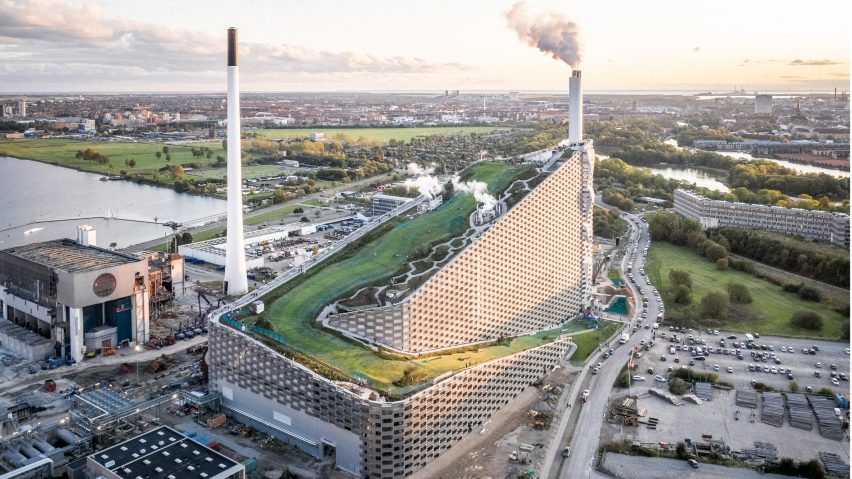
Ten landmark buildings and spaces in Copenhagen
Promotion: with the UIA World Congress of Architects taking place in Copenhagen in 2023, we take a look at some of the city's most innovative examples of contemporary architecture and landscape design.
The 28th UIA World Congress of Architects, hosted by the International Association of Architects, takes place in Copenhagen from 2 to 6 July 2023.
The goal is to address how architecture can help to achieve the UN's 17 Sustainable Development Goals, which include climate action, affordable and clean energy, good health and wellbeing and gender equality.
Copenhagen, which was voted the world's most sustainable city by Time Out in 2021, features many new buildings and spaces that target these ambitions.
Dezeen has teamed up with Visitcopenhagen to compile a guide to 10 of the most interesting examples.
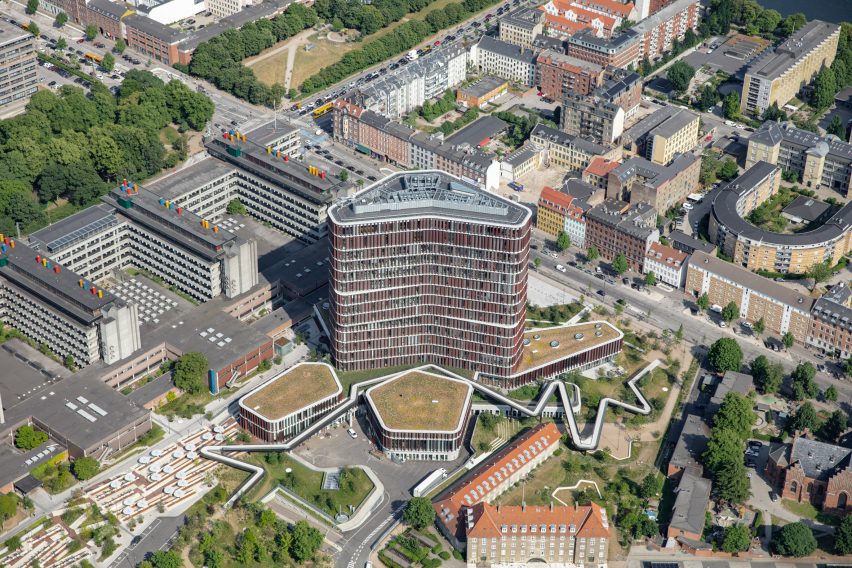
Mærsk Tower
This state-of-the-art research facility provides an environment for world-class health research.
Designed by CF Møller Architects, the 15-storey tower provides an extension to Panum, the University of Copenhagen's Faculty of Health and Medical Sciences.
It boasts a facade of copper-covered shutters, helping it to become a recognisable landmark in the city.
Find out more about Mærsk Tower ›
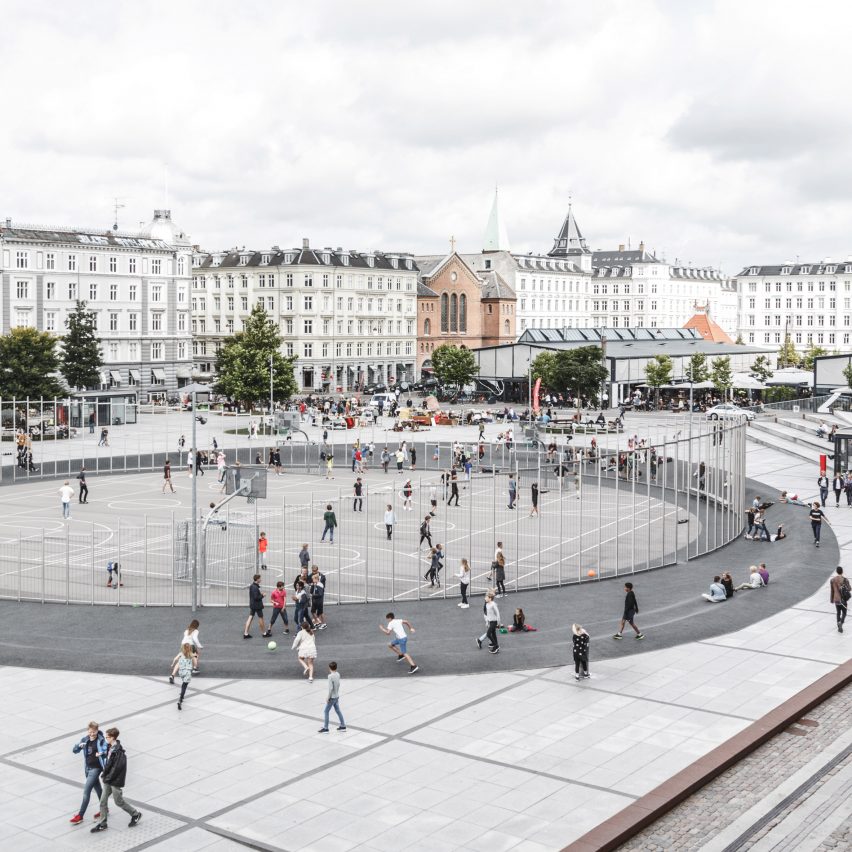
Israels Plads
This transformation of a historic public square turns it into a popular place for people, rather than cars.
Israels Plads was originally a vibrant market square but, in the 1950s, it became a car park. It stayed that way for several decades, until local studio COBE was set the task of redesigning it.
The project was completed in 2014 and has completely reinvigorated the plaza as a hub of sport and leisure for all, while cars are now placed in an underground garage beneath it.
Find out more about Israels Plads ›
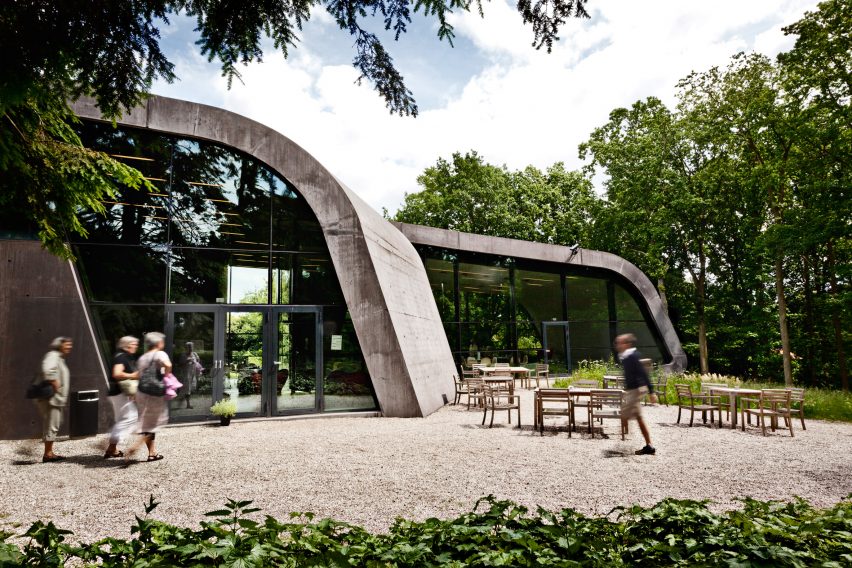
Ordrupgaard Museum
Architecture firm Snøhetta had accessibility for all in mind when adding an extension to this prestigious art museum.
Dedicated to French and Danish art from the 19th and early 20th century, Ordrupgaard Museum was previously split between a 19th century building by Danish architect Gotfred Tvede and a 2005 extension by Zaha Hadid Architects.
Snøhetta's addition is a series of five new underground galleries that link these two buildings, while also safeguarding the surrounding park.
Ordrupgaard Museum is also the home to Danish architect Finn Juhl's world-famous house, which is considered "one of the most successful functionalist single-family houses in Denmark".
Find out more about Ordrupgaard Museum ›
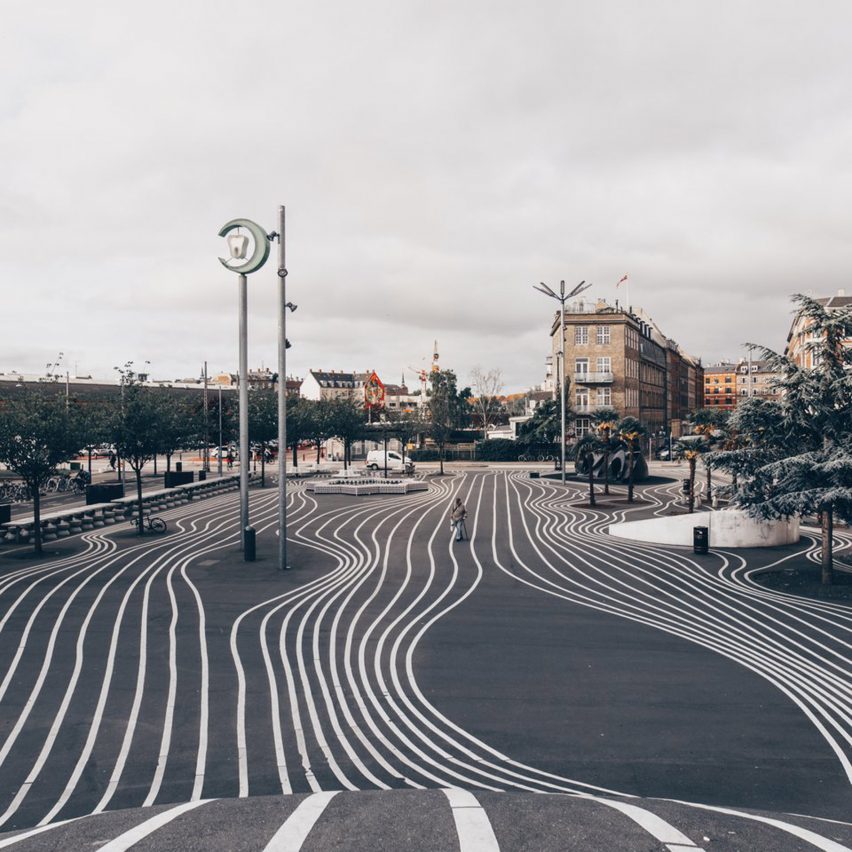
Superkilen Park
This urban neighbourhood park is designed to bring together people of diverse cultures and backgrounds.
Designed through collaboration between BIG and landscape studios Superflex and Topotek 1, Superkilen is located in Nørrebro, one of the city's most multicultural neighbourhoods.
The design incorporates elements that relate to 60 different nationalities, including benches from Brazil, fountains from Morocco and swings from Iraq.
Find out more about Superkilen Park ›
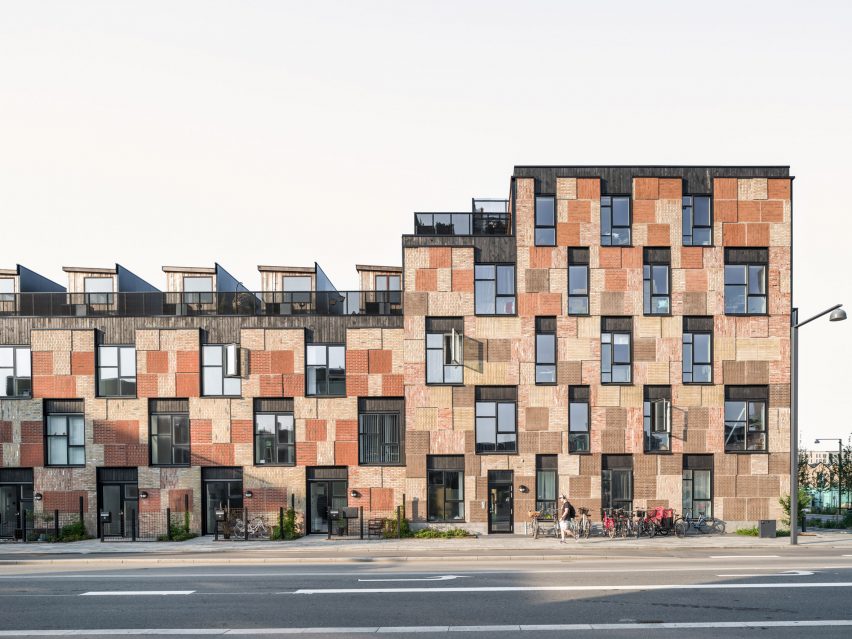
Resource Rows
Recycled materials played an important role in the construction of these urban townhouses.
Designed by Danish architects Lendager Group, Resource Rows consists of 20 homes that were built with a circular economy approach.
The buildings incorporate recycled concrete, repurposed wooden floor boards and windows salvaged from old buildings, along with roof gardens and solar panels, in order to reduce their carbon footprint.
Find out more about Resource Rows›
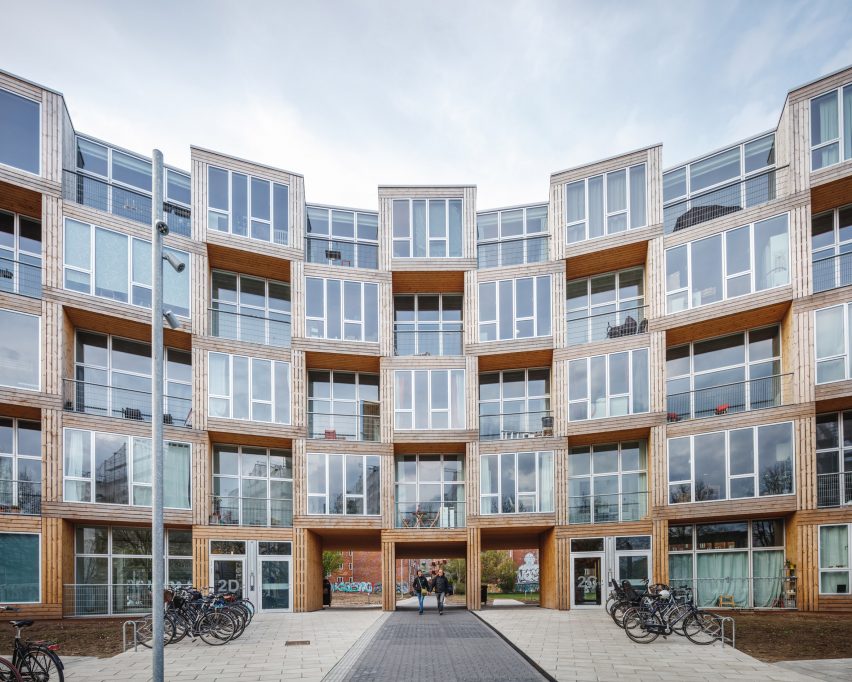
Dortheavej Residence
"Homes for all" was the ambition behind this timber-framed social housing development.
Architecture studio BIG designed the building for Danish non-profit housing association Lejerbo. The building takes the form of a "winding wall" made up of prefabricated timber modules, which curve to frame a public plaza.
Inside, it contains 66 homes that boast 3.5-metre-high ceilings, full-height windows and south-facing balconies.
Find out more about Dortheavej Residence ›
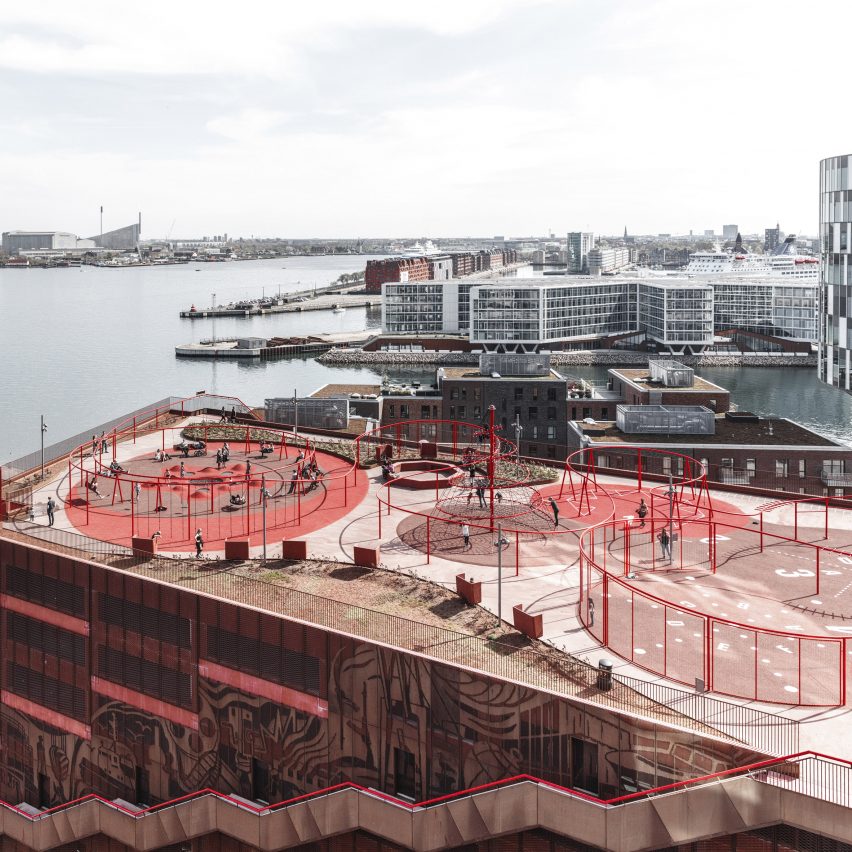
Konditaget Lüders
This car park in Copenhagen's Nordhavn is equipped with a rooftop designed as a space for sport, yoga and socialising.
The rooftop is located 24 metres above ground, and is a space that provides views of the city's horizon. Instead of concealing the car park's structure, architecture studio JAJA's design enhances the beauty of its structural grid.
Find out more about Konditaget Lüders ›
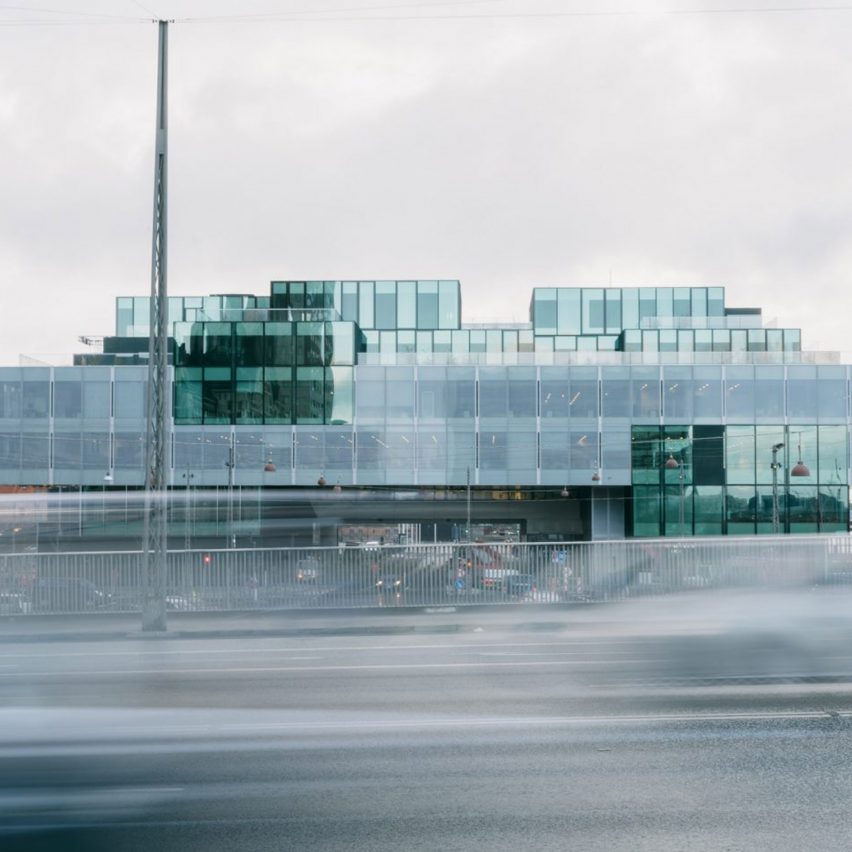
BLOX
Conceived as a "mini city", this mixed-use building was designed by Dutch firm OMA with a civic nature.
Made up of stacked volumes that bridge across a road, BLOX is home to the Danish Architecture Center, plus co-working offices, creative studios, apartments, a gym and a restaurant.
The base of the building is open, encouraging the public to come in and explore, and there's also a stepped playground that can double as an open-air cinema.
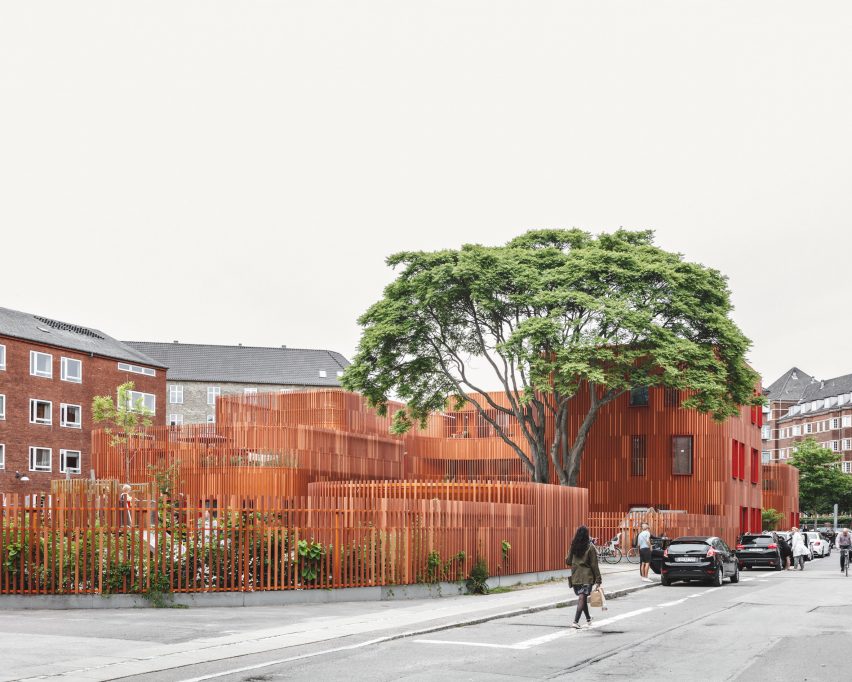
Forfatterhuset Kindergarten
This pre-school consists of five buildings dotted amongst trees and gardens "like potted plants on a terrace".
COBE designed the building, with the ambition of creating "a garden village for kids".
A facade of vertical brick slats wraps both buildings and gardens, allowing indoor and outdoor activities to merge. Areas are also divided up into zones, so that children of different age groups can all find spaces where they feel welcome.
Find out more about Forfatterhuset Kindergarten ›
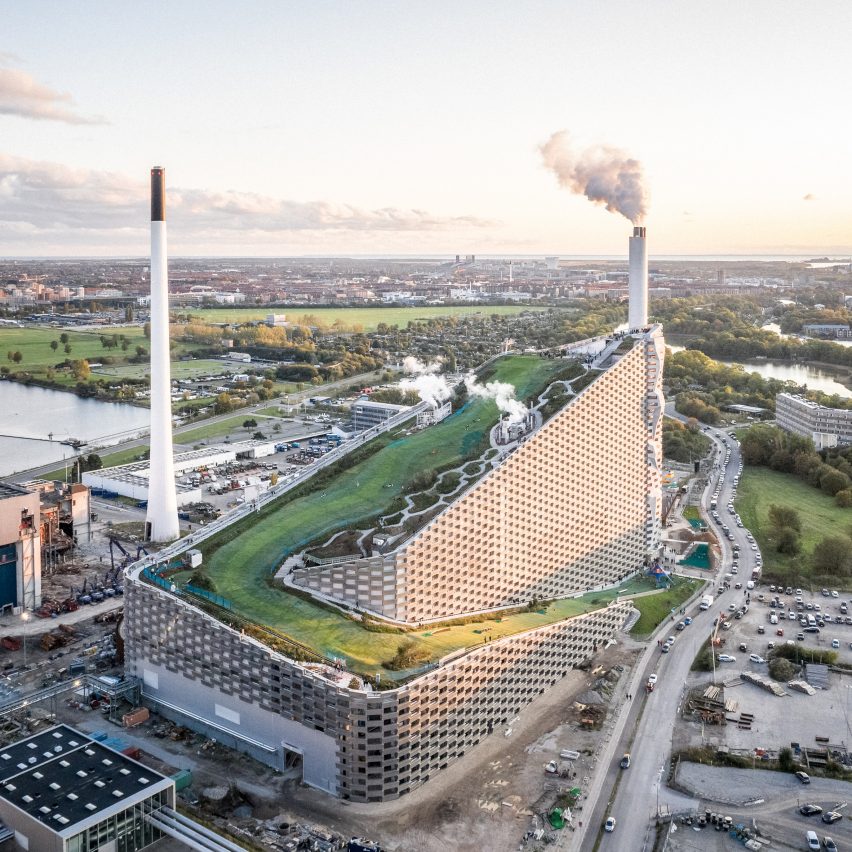
CopenHill
As the first of three projects on this list designed by Bjarke Ingels' firm BIG, this is a power station with a difference.
As well as housing what is said to be the "cleanest waste-to-energy power plant in the world", the building incorporates a year-round ski slope, a hiking and running trail and an 85-metre-high climbing wall.
It offers a new way to think about urban infrastructure.
Find out more about CopenHill ›
All images unless specified are by Rasmus Hjortshøj of photography and research studio Coast.
Partnership content
This article was written by Dezeen for Visitcopenhagen as part of a partnership. Find out more about Dezeen partnership content here.